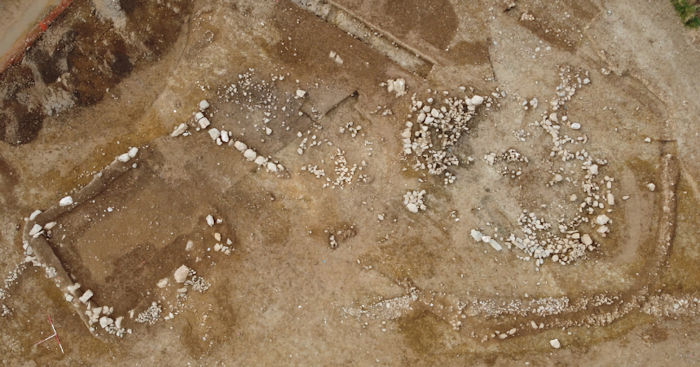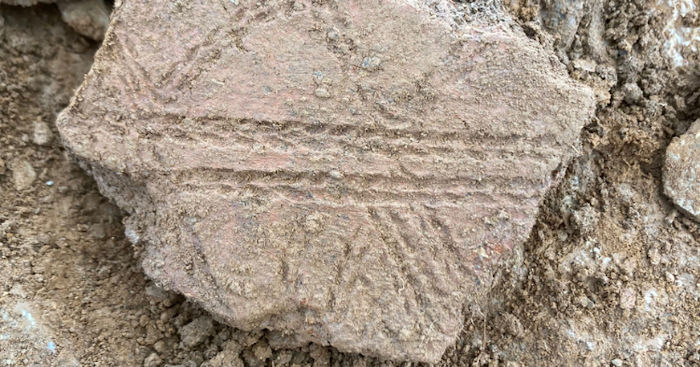Jan Bartek – AncientPages.com – A series of ancient dwellings have been discovered at the site of a new housing development in Newquay.
Archaeologists from the Cornwall Archaeological Unit have uncovered three Bronze Age roundhouses, a Roman-period settlement consisting of an oval house, a large processing area (thought to be used for cereals) and two rectangular buildings (probably former barns) at the site.

The site from above. Credit: Cornwall Council
Sean Taylor, Senior Archaeologist at the Cornwall Archaeological Unit, said in a press statement: “Although quite a few of these Bronze Age structures have been found at various sites around the county over the last 30 or so years starting with Trethellan at Newquay in 1987, it’s still rare to find so much in one small area.
“The Roman house is similar to buildings found at Trethurgy Round near St Austell in the 1970s and are of a type unique to Cornwall. The rectangular agricultural buildings on the other hand are fairly common throughout Roman Britain but this is the first time that they have been discovered in Cornwall.
“It’s starting to look like this part of Newquay, alongside the River Gannel, was a very important and densely populated area from the Neolithic (c 4000BC) onwards. The estuary undoubtedly formed an important link with the outside world throughout prehistory.”

Bronze Age Trevisker ware pottery was uncovered during the dig. Credit: Cornwall Council
The Cornwall Archaeological Unit completed their work at the end of March. The site will now be handed over to the developer, Treveth.
It’s hoped that many of the finds discovered at the site, which include large quanтιтies of Bronze Age Trevisker ware pottery, Roman-period imported pottery, and worked stone tools from both periods, will be housed in a local museum.
See also: More Archaeology News
Councillor Martyn Alvey, portfolio holder for Environment and Climate Change at Cornwall Council, said: “These structures are really significant for Cornwall and it is fantastic to get a glimpse of what life was like in Newquay all those years ago.
“I hope that we are able to house many of the finds locally and look forward to hearing more about them.”
Written by Jan Bartek – AncientPages.com Staff Writer





